
E-commerce Development
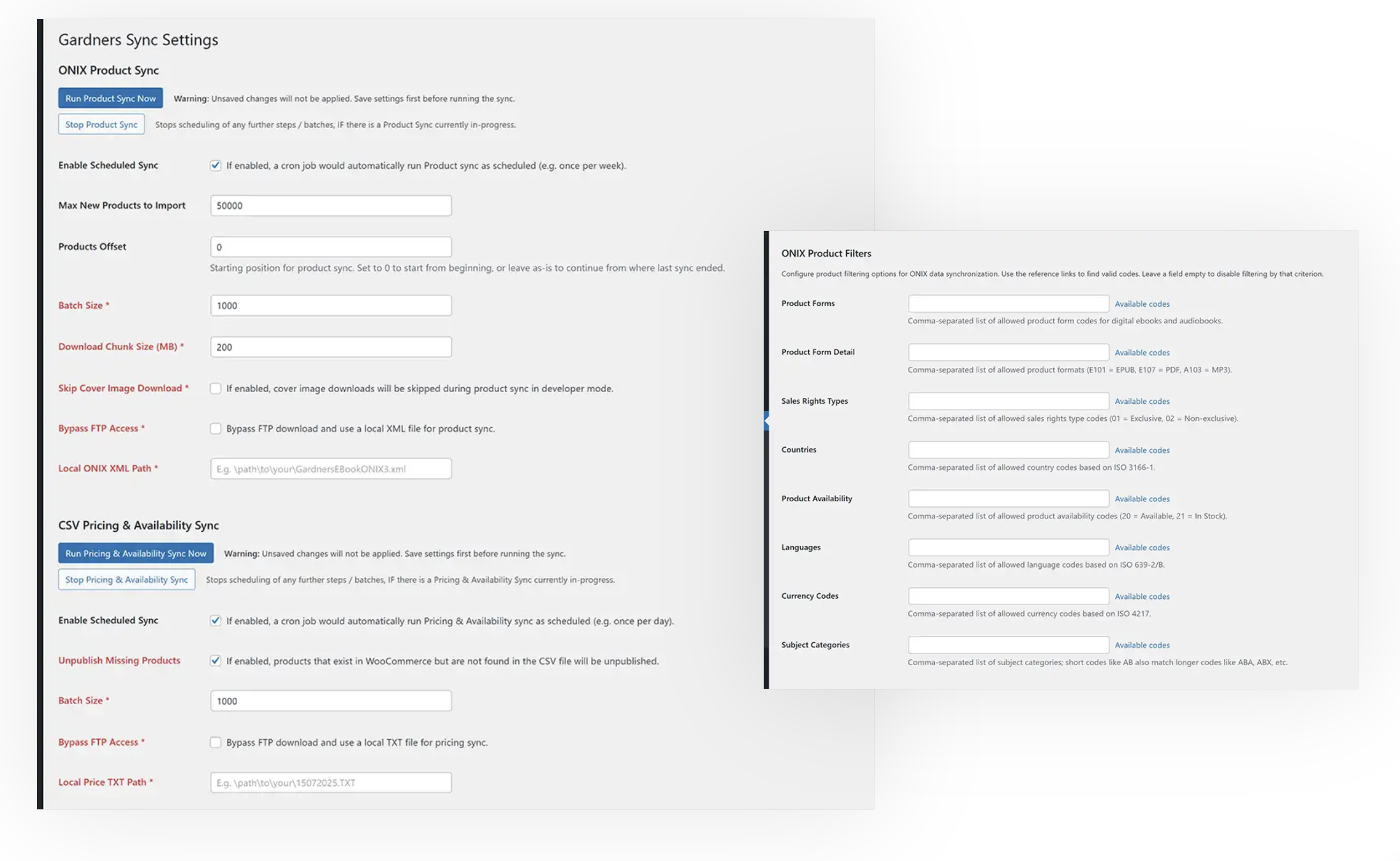
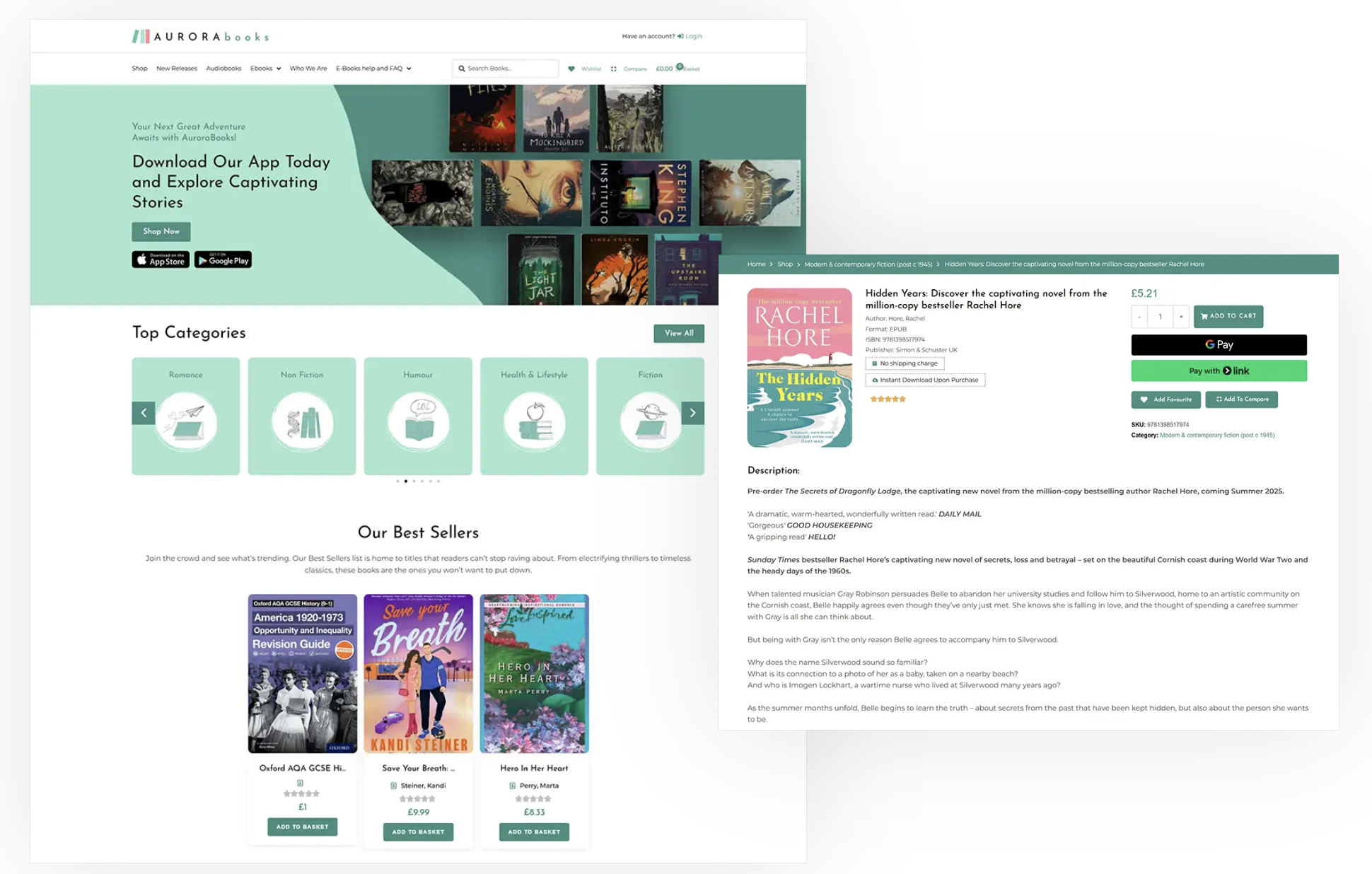
Development of a Plugin for ONIX Integration for a UK Online Bookstore
The main requirement was to ensure functional and fully automated communication with the supplier (Gardners), enabling the e-shop to always display up-to-date product information – including titles, prices, availability, covers, and metadata.
Additionally, it was necessary to ensure that customers automatically received an email after purchase containing a download link for the product along with a password. The entire solution was to function with minimal manual intervention from the client.
To enable automated data exchange between the e-shop and the digital content supplier, we developed two separate WooCommerce plugins:
Synchronization Plugin
This plugin regularly imports and updates the product catalog from the supplier’s ONIX feed. Synchronization occurs daily or weekly and ensures that customers always have access to the latest availability and pricing information.
Order Plugin
After a successful order, this plugin automatically sends an email to the customer. The email contains a link to download the purchased product and the password to unlock it.
What was the main challenge in this project?
The biggest challenge during development was handling the large volume of data – more than 3 million book titles had to be regularly synchronized, which could have caused performance and stability issues.
During development, we encountered significant system slowdowns when processing and storing large ONIX feeds. To resolve this, we optimized the synchronization process – both from a technical and a product perspective.
We introduced the following mechanisms:
The option to filter the content to be synchronized – for example, only specific languages or genres.
Configurable limits for batch imports – instead of processing the entire 3-million-title catalog at once, the import can be split into multiple parts to prevent system overload.
What was your solution or approach?
1. Analytical Phase
In the initial phase, we familiarized ourselves in detail with the ONIX format specification and the data structure of the feed from the supplier Gardners. At the same time, we analyzed the WooCommerce architecture and assessed the technical feasibility of the entire integration.
2. Development of Synchronization and Order Plugins
In the second phase, we focused on developing the WooCommerce plugins. Given the catalog’s size, it was essential to adapt the synchronization plugin to handle processing large volumes of data during each synchronization.
3. Optimization & UX Enhancements
We added new features to the WordPress admin interface, significantly simplifying e-shop management for the client. Filters by language, book type, and genre were introduced, along with custom settings for individual plugins, including limits for batch imports. As part of delivery, we also provided a user guide, enabling the client to manage the system independently.
4. Deployment and Monitoring
After development was completed, we deployed the solution to the production environment and tested it with real data to verify reliability in live operation. We then set up a support and maintenance system under SLA, giving the client confidence that the solution would remain stable and functional in the long term.
What was the outcome or impact for the client?
The developed solution enabled the client to scale their offering, speed up operations, and automate digital content sales – without the need for additional infrastructure or complex systems.
- Process automation – daily and weekly updates of product prices and availability without manual intervention
- Seamless customer experience– customers immediately receive an email with a download link and password
- Simple e-shop management – intuitive control through the WordPress admin interface
- Customizable settings – filters, templates, and synchronization parameters tailored to needs
- Support and training – SLA-backed support and a user guide for easy onboarding and operation
Other case studies from Cassovia Code
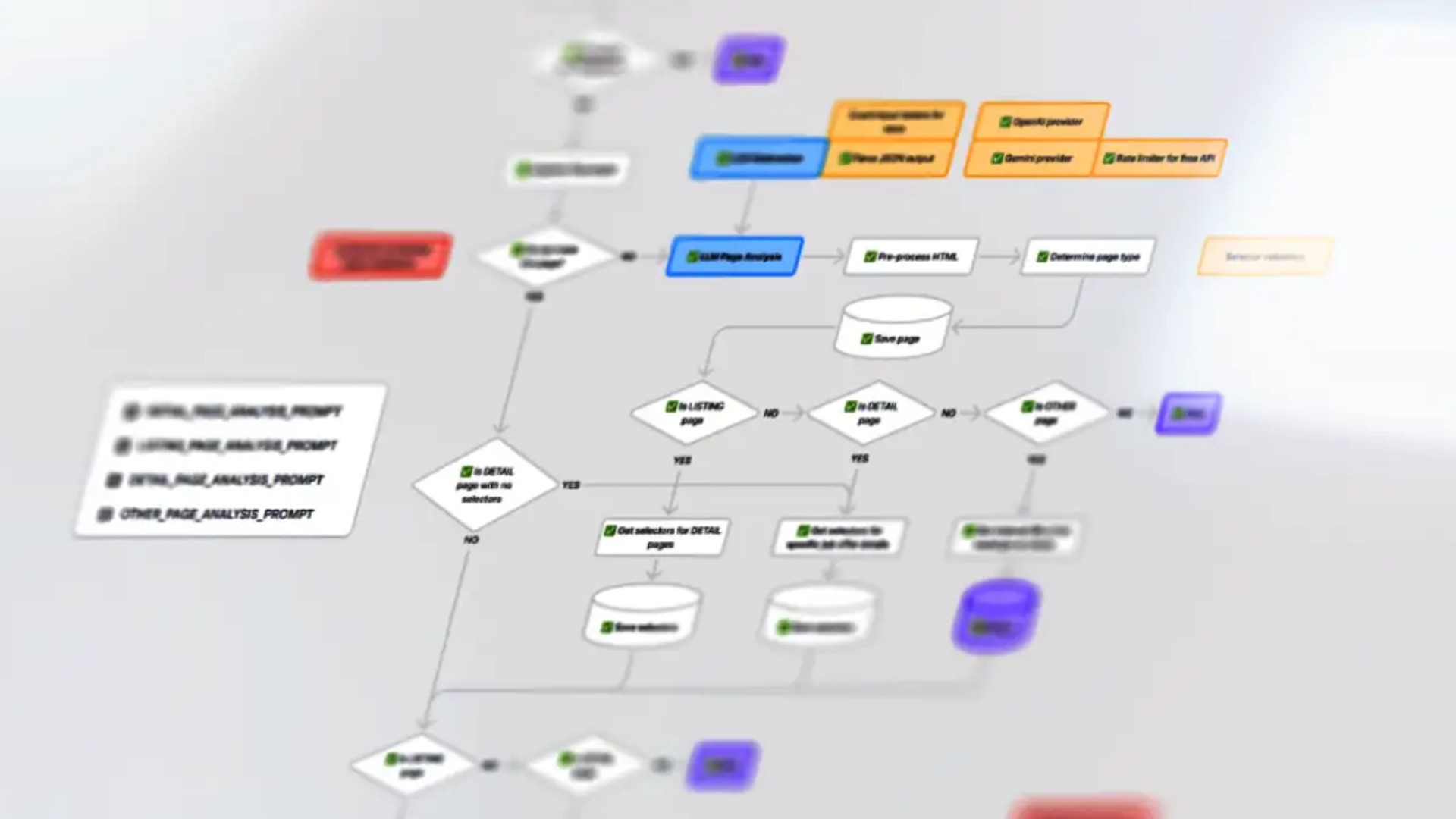
AI Development

Mobile App Development

Web & Software Development

E-commerce Development
Other e-commerce development case studies

E-commerce Development
E-commerce Development
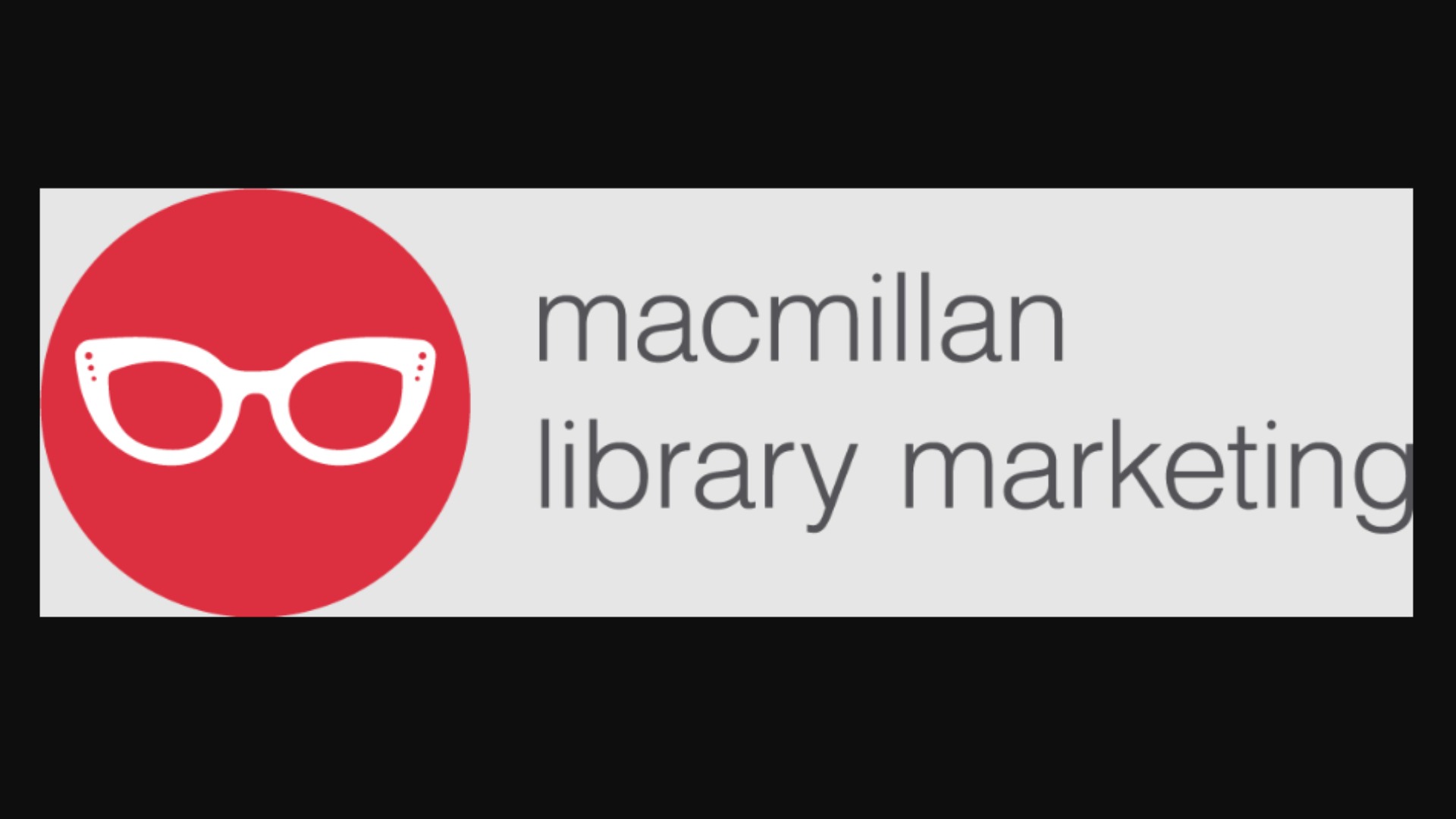
E-commerce Development

E-commerce Development
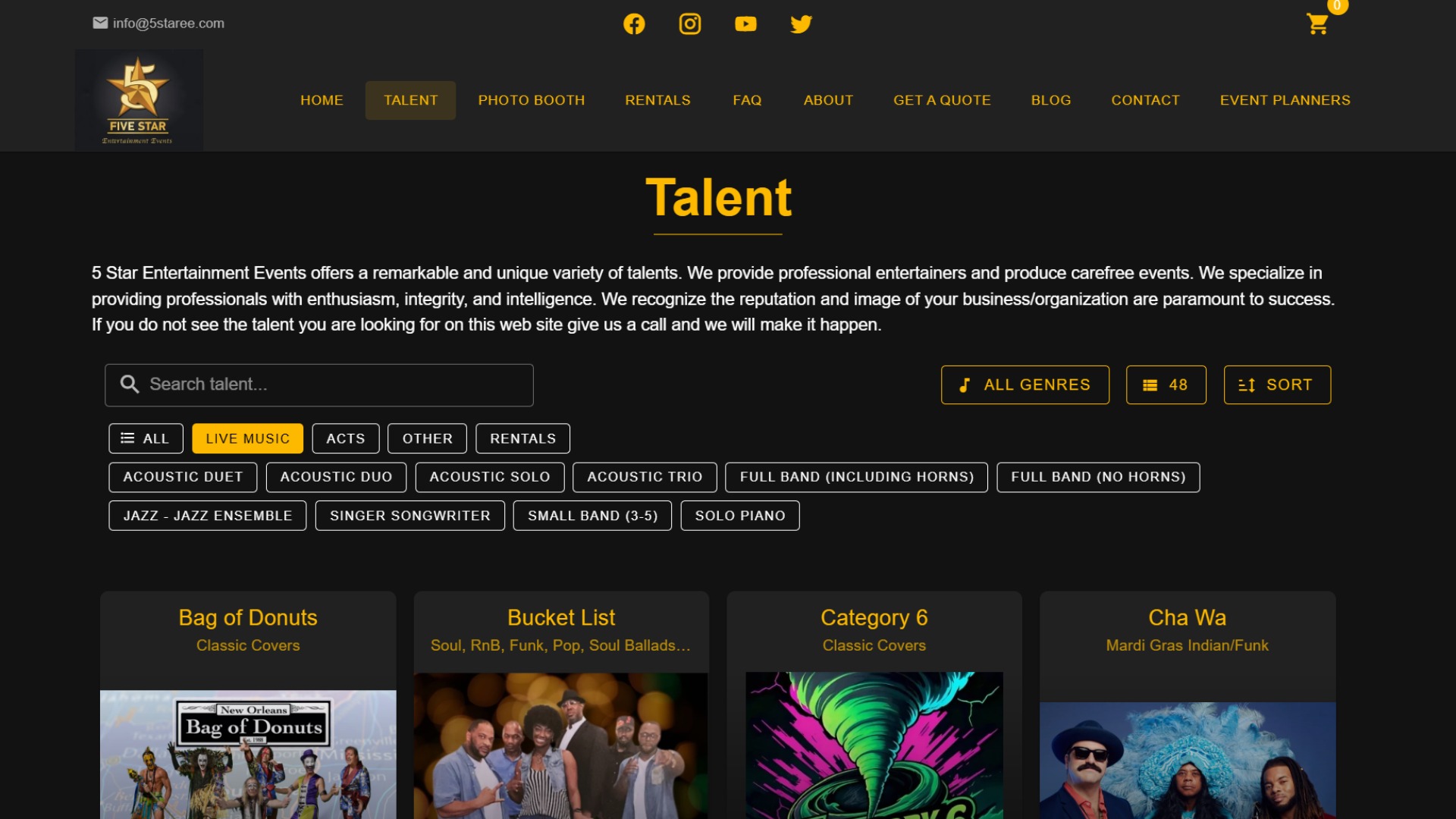
E-commerce Development
DDigital Developments Ltd
5 Star Entertainment Events: The All-in-One Platform Revolutionizing Event and Talent Management.
NuxtPHPMySQL+1
E-commerce Development
MMarvel Web Solution
SEO and Website Design | Unik by Nature - Handcrafted Home Goods & Gifts
Project Details
Need similar services?
Agencies providing e-commerce development
Posted this
C
We bridge technology and business, delivering end-to-end digital products, simplifying challenges, and empowering clients with exactly what they need and what they can skip.
I
Web design company in Kochi, trusted since 2010
I
Powering high-performance WooCommerce and Shopify stores.
E
Software Solutions: Consulting and Development
V
Building Brands That Thrive Online
4
Designing and Developing Digital Solutions for Brands
D
Building digital masterpieces one pixel at a time
R
Transforming Brands and Businesses
R
Expert Shopify Web Design and Development Services
C
Buy Vezlay Food Products From Catchy Court
B
Think Creative, Your 360° Digital Growth Partner.